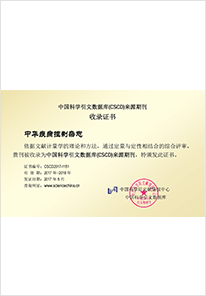2023 Vol. 27, No. 1
Display Method:
2023, 27(1): 1-3.
doi: 10.16462/j.cnki.zhjbkz.2023.01.001
Abstract:
2023, 27(1): 4-10.
doi: 10.16462/j.cnki.zhjbkz.2023.01.002
Abstract:
2023, 27(1): 17-22.
doi: 10.16462/j.cnki.zhjbkz.2023.01.004
Abstract:
2023, 27(1): 29-35.
doi: 10.16462/j.cnki.zhjbkz.2023.01.006
Abstract:
2023, 27(1): 41-46.
doi: 10.16462/j.cnki.zhjbkz.2023.01.008
Abstract:
2023, 27(1): 47-52.
doi: 10.16462/j.cnki.zhjbkz.2023.01.009
Abstract:
2023, 27(1): 53-59.
doi: 10.16462/j.cnki.zhjbkz.2023.01.010
Abstract:
2023, 27(1): 65-69.
doi: 10.16462/j.cnki.zhjbkz.2023.01.012
Abstract:
2023, 27(1): 70-76.
doi: 10.16462/j.cnki.zhjbkz.2023.01.013
Abstract:
2023, 27(1): 77-81.
doi: 10.16462/j.cnki.zhjbkz.2023.01.014
Abstract:
2023, 27(1): 89-94.
doi: 10.16462/j.cnki.zhjbkz.2023.01.016
Abstract:
2023, 27(1): 100-106.
doi: 10.16462/j.cnki.zhjbkz.2023.01.018
Abstract:
2023, 27(1): 107-111.
doi: 10.16462/j.cnki.zhjbkz.2023.01.019
Abstract:
2023, 27(1): 112-116.
doi: 10.16462/j.cnki.zhjbkz.2023.01.020
Abstract:
2023, 27(1): 117-120.
doi: 10.16462/j.cnki.zhjbkz.2023.01.021
Abstract:


 Email alert
Email alert RSS
RSS Abstract
Abstract HTML
HTML PDF
PDF





